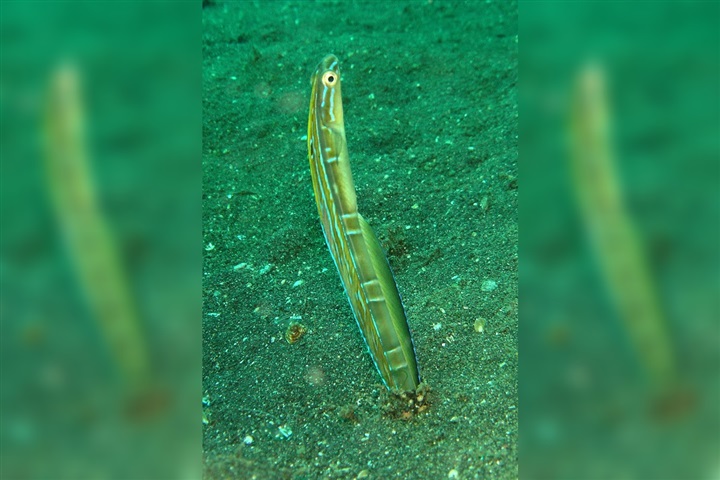Xiphasia setifer

| Latin name | Xiphasia setifer - Swainson, 1839 |
|---|---|
| Local name | Hairtail blenny |
| Family | Blenniidae - Xiphasia |
| Origin | East Indian Ocean, West Indian Ocean, Australia, Japan, The Red Sea, Indonesia, New Zealand, Central/West Pacific |
| Max length | 53 cm (20.9") |
| Minimum volume |
1000 l (264 gal) |
|---|---|
| Hardiness |
Average |
| Suitable for aquarium |
Suitable with care |
| Reef safe |
Reef safe with caution |
| Aggressiveness | Might be aggressive towards similar species |
| Recommended |
Small crustaceans (Krill, mysis, artemia...) Zooplankton (Cyclops, pods...) |
|---|
This spicies might be a threat to smaller fishes.
This species can be a threat towards small crustaceans, e.g. small shrimp.
These fish flourish better without other members of the same species in the aquarium.
This species needs good hiding places, for example, between live rocks.
This species thrives best if there is sufficient sand into which it can dig itself in.
This species is nocturnal and therefore the most active when the light is dimmed or turned off.
There are many differences within the Toothcomb Blennies family, some eat algae whilst others eat zooplankton. There are many families of Blennies, this is merely one of them.
What they have in common are their oblong shape and long dorsal fin. Some species have small "legs" used to move around the bottom.
These Blennies do not normally get very big and are therefore a good choice for both small and large aquaria. They are not often very colorful, but many have a fun personality which many aquarists fall for.
The species of the families Aspidontus and Plagiotremus imitate Cleaner Wrasses and can therefore be difficult to identify.
| Aquarium trade | Yes |
|---|---|
| Distribution | Indo-West Pacific: Red Sea and False Bay, South Africa to Vanuatu, north to southern Japan, south to Australia. |
| English common names |
Snake blenny Snakeblenny Hairtail blenny Hairtail snakeblenny Hair-tail blenny |
Barry Wisebram. 2015. Fincasters Episode 70 Hairfin Eel Blenny - Fincasters - (English)
Jeff Kurtz. 2007. Combtooth Blennies: Bewitching Bottom Dwellers - Tropical Fish Hobbyist - (English)
Scott W. Michael. Reef Aquarium Fishes: 500+ Essential-to-know Species - TFH Publications / Microcosm Ltd. - (English)
Bob Fenner. The True/Combtooth Blennies, Family Blenniidae - Wet Web Media - (English)
Bob Fenner. Blennioids: Blennies and Blenny-Like Fishes - Wet Web Media - (English)

